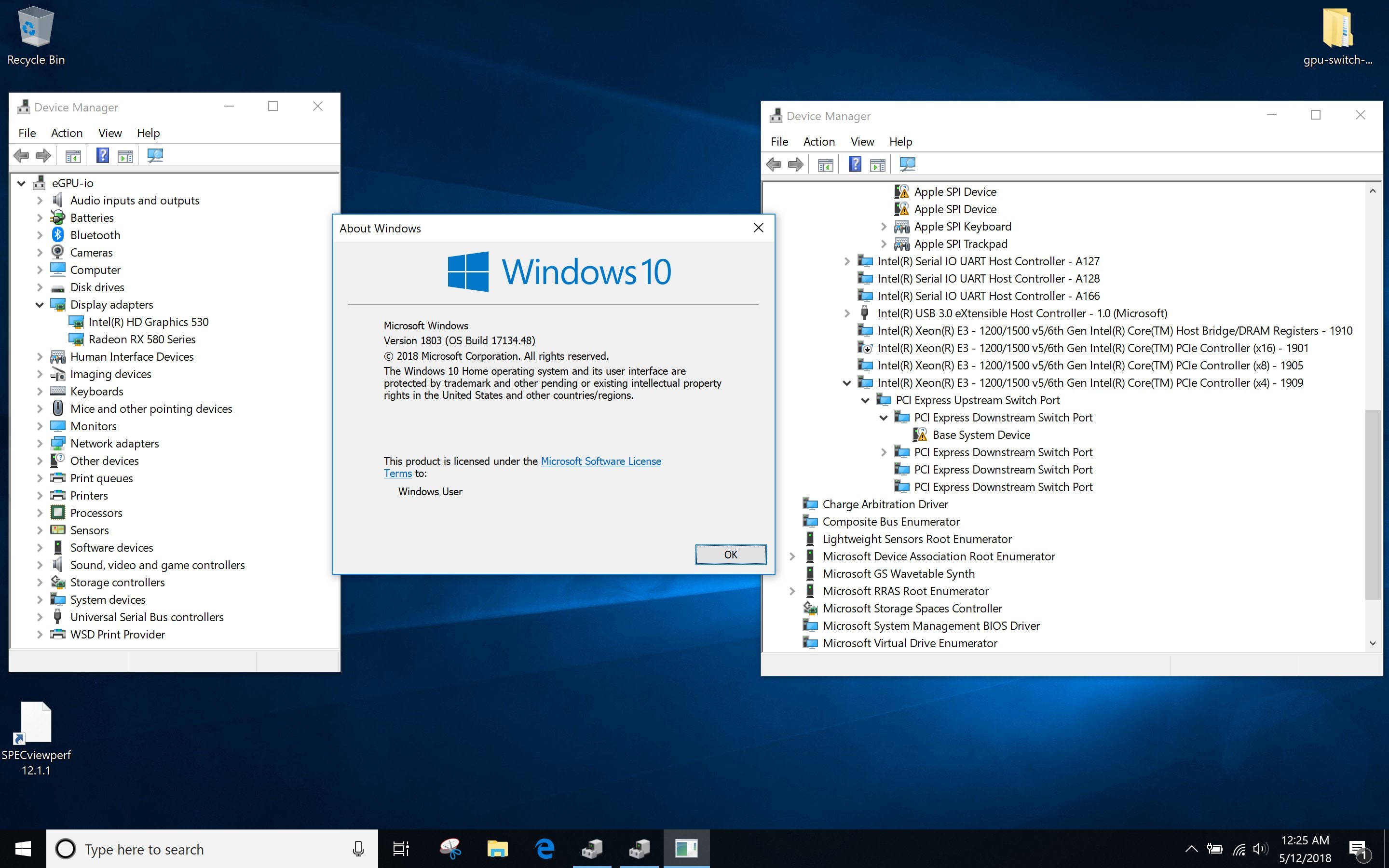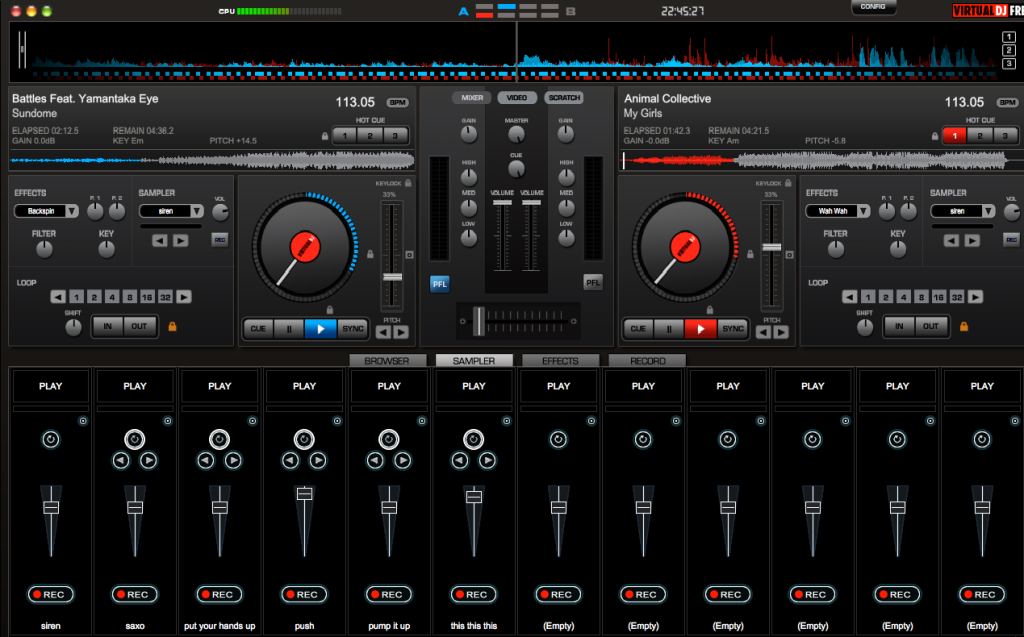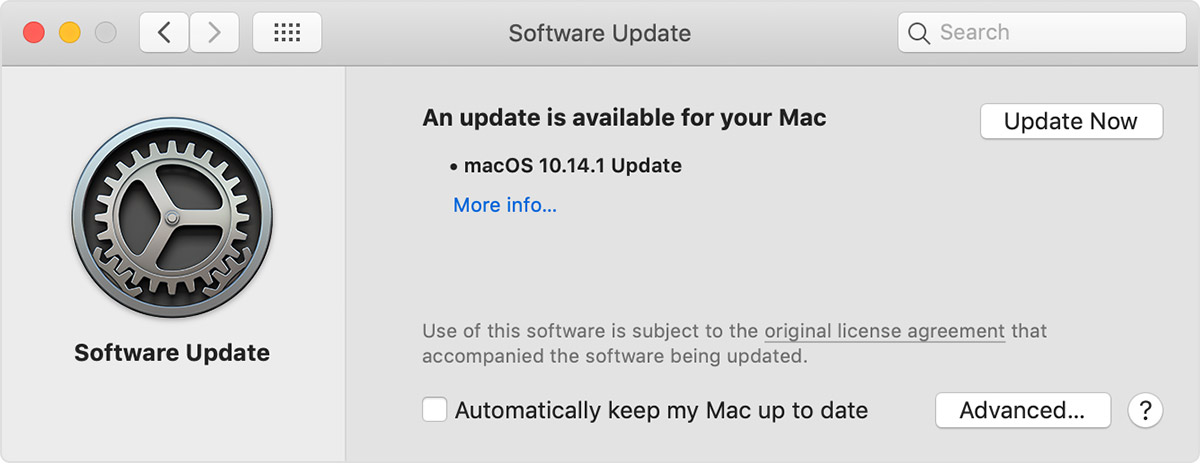- Windows 10 For Mac
- Should I Download Windows 10 To My Macbook Pro
- Should I Download Windows 10 To My Macbook Air
- Download Mac On Windows 10
- Should I Download Windows 10 To My Mac Os
- How Do I Download Windows 10 On My Macbook Air
- How To Get Windows On Mac
- Download Windows 10 To My Mac
Can Windows 10 run on a Mac?
Of course it can. Users have been able to install Windows on a Mac for years, and Microsoft's latest operating system is no exception. And no, the Apple police won’t come after you, we swear.
See also: Windows 10 review: A needed upgrade with missing pieces

Tip: The 64-bit version is installed by default unless Office detects you already have a 32-bit version of Office (or a stand-alone Office app such as Project or Visio) installed.In this case, the 32-bit version of Office will be installed instead. To change from a 32-bit version to a 64-bit version or vice versa, you need to uninstall Office first (including any stand-alone Office apps you. Install Windows 10 the FAST way (2020): If you have ever wanted Windows 10 and macOS on the same device, you came to the right p.
By installing Windows 10, you get access to a host of new features. First you'll notice the look and feel. It's taking the flat, tile-based user interface introduced in Windows 8 and combining it with the Windows your parents know. There's a fancy new browser called Edge, and a new app switcher Mac users are sure to find familiar.
But be warned: Even though you can install Windows 10 on a Mac, that doesn’t mean you should. Apple doesn’t officially support Windows 10 on a Mac, so there's a good chance you may run into driver issues.
Case in point: When I tried installing Windows 10 on a new MacBook, once it rebooted into Windows, the keyboard and trackpad didn’t work. And when we successfully installed it on a 2013 Macbook Pro with Retina Display, the Wi-Fi didn’t work.
There are likely workarounds for these issues, but the best course of action for those who want Windows 10 on a Mac right now is probably just to wait for better solutions, or sit tight with Windows 8.1.
But for those determined to press on, here's how to do it.
Virtual, or Boot Camp?
If you’ve decided to install Windows on your Mac, you've got a few different options. You could run it virtually, or you can use Bootcamp to install it on a partitioned part of your hard drive.
If this is going to be a temporary look at Windows 10, or if you’re only running it occasionally, it's better to run it in a virtual environment.
That means you'll run Windows as an app inside of Mac OS X. This will let you play with the interface and run some apps in order to get a feel for the operating system. But because you’re really running two OSes at once, you’re sacrificing performance. If you want to go this route, you can download VirtualBox or Parallels.
If you plan on making a longterm commitment to Windows 10, it's best to install via Boot Camp. This way, your computer can devote all of its resources (like its processor and RAM,) to running only Windows.
You'll be walling off a chunk of your hard drive to use only with Windows 10, and you shouldn't take this lightly. Think about how much space you'll need for your longterm needs, as the only way to adjust this later is to erase the partition and install the operating system all over again. And of course, whenever you're fussing around with your system, save a backup to an external hard drive just in case something goes wrong.
Mashable chose to install via Boot Camp, since the operating system will run more smoothly.
Quick note: You’ll need a Windows 10 ISO file to install the software no matter which way you choose to install. Windows 10 is rolling out only for Windows users who signed up for it earlier. If you signed up, you’ll be able to download the ISO file from Microsoft’s site, which you can install on a Mac.
If you didn’t sign up, the retail version is coming on Aug. 31, so those who want it on a Mac may have to wait until then.
Install it with Boot Camp
Once you’ve decided to dive into Windows 10 on your Mac, the first thing you should think about is hard drive space.
Lots of Mac users install Windows for gaming, and that can take up a lot of space. If that's you, we recommend making about half the entire hard drive available to Windows. Another option is to install the operating system onto the hard drive, and keep games saved on an external disk.
Make sure you have an at least 8GB USB flash drive and plug it into your Mac. Open up Boot Camp, and hit continue.
You’ll be presented with three options. If you’re doing this for the first time, leave all three checked. Your computer is about to create a bootable drive with Windows on it, then download the drivers you need so you can still use your keyboard, trackpad or mouse. However, these drivers were made for Windows 8.1, so whether or not they'll work on your machine is a bit of a gamble.
You’ll be warned that the drive is about to be formatted. If you’re comfortable with losing everything on that disk drive, go ahead and proceed. Next, Boot Camp will copy Windows files over and create the bootable disk drive. Once it’s done with that, it’ll ask you how much of your computer’s hard drive you want to dedicate to Windows. You can drag the bar to set how much you want to allocate.
Then your computer will create the partition, download the drivers, and turn the flash drive into a bootable disk. Your computer should reboot into Windows. If your computer reboots into OS X, just hit restart and hold the option key while the computer is coming back on. This part might take a while, so feel free to grab some tea, or fiddle with your phone.
Once it reboots, you’ll see three options: EFI Boot, Windows, and Mac. Select EFI Boot, and follow the prompts until you get to a screen with two options: one for a custom install and upgrade.
Choose custom, navigate to your partitioned drive and hit format. From then on, Windows will whisk you through the initial setup screens.
After those screens, the new Windows wallpaper will emerge, and you’ll be all set. Again, that's if your drivers are working correctly.
BONUS: Windows 10 review
Mac vs Windows. Windows vs Mac. Why choose if you can get the best of both worlds by dual booting? Install Windows on Mac so you can jump back and forth from one operating system to another on the same computer.
By now, the practice is well-established and Windows can work on Mac well. In this article, we’ll have a deep look at installing Windows on Mac. Don’t worry, we’ll have your back the whole way through!
Boot Camp for Mac vs virtualization software
If you want to install Windows on your Mac, you have two options. You can either use Mac Boot Camp, a native feature of the macOS operating system, or you can use a third party virtualization program. Both methods have their own pros and cons, so let’s dive in.
Boot Camp is built into the operating system of all Macs. If you go to your Applications > Utilities folder, you’ll see the Boot Camp Assistant app. It makes the separate partition on your hard drive for installing and running Windows. Once Windows is installed in Boot Camp, every time you turn on your Mac, you will be asked to choose the operating system you want to run. This means that in order to switch from macOS to Windows, you need to reboot your computer.
Advantages
- built into your operating system
- easy to use — Boot Camp Assistant guides you through the installation process
- puts less strain on your Mac’s memory and processing power
- completely free (not Windows of course)
- easy to update
Disadvantages
- you need to reboot your computer to switch between the systems
- transferring data between operating systems isn’t easy
Virtualization programs are third-party applications that allow to install a separate operating system on one machine. They run like any other app on your Mac, so you can see the entire Windows desktop within a window on your computer.
Among the most popular virtualization programs are VirtualBox, Parallels, and VMware. Each one has its peculiarities, but we’ll try to sum up what they have in common.
Advantages
- you can run both operating systems at the same time
- easy file integration between systems
Disadvantages
- you need at least 8 GB of RAM for Mac to run smoothly
- virtualization apps are not cheap
- updates are not free
Depending on your specific needs, you can choose the option that works best for you. But we suggest using Boot Camp. It’s a free native feature of your operating system, running directly on your hardware. Therefore, it will be faster than any other method. And below, you’ll find all information on how to run Boot Camp on your Mac.
How to use Boot Camp: Preparing your Mac
1. Check the system requirements
Some versions of Windows require a certain processor and more hard drive space than the others. Therefore, you have to check the documentation that came with your copy of Windows to learn what you need.
You also need to make sure that your Mac is compatible with the version of Windows you want to install. For instance, Windows 10 is supported on these models:

- MacBook (2015 and later)
- MacBook Pro (2012 and later)
- MacBook Air (2012 and later)
- iMac (2012 and later)
- Mac Mini (2012 and later)
2. Clean up your hard drive
You need to have at least 55 GB of free disk space on your startup drive for installing Windows on a Mac. And if you don’t feel like spending the next several hours cleaning your Mac manually, you can use a powerful utility CleanMyMac X to find and remove all the junk from your startup disk.
CleanMyMac has everything to finish the 3-hour task of cleaning your hard drive in less than 5 minutes. It will scan every inch of your system and remove gigabytes of junk in two clicks. By the way, CleanMyMac finds about 75 GB of junk on average — more than enough for a smooth Windows installation.
Windows 10 For Mac
Here’s how to clean your Mac with CleanMyMac X:
- Download CleanMyMac here.
- Run the app and click Scan.
- Click Run.
That’s it! Gigabytes of junk are gone from your computer forever.
3. Back up your Mac
Finally, you should also perform a backup of your Mac in case something goes wrong. Although, it happens very rarely, it’s always better to back up your important data. There are a few methods of backing up your Mac, so choose the most convenient one for you.
You can make automatic backups with Time Machine — software that comes with your Mac. It backs up all data, so you can recover individual files or your entire system from your backups. You may also store files in iCloud and access them whenever you need. iCloud comes with 5 GB of free storage but you can upgrade it any time. If you have an external storage device, you can copy some files and folders on it.

We do recommend you to back up your Mac before installing Windows as it minimizes the chance of losing important data.
Should I Download Windows 10 To My Macbook Pro
How to Install Windows with Boot Camp
Here’s how to install Boot Camp. The installation can be a little time consuming, but it is by no means difficult. Check out the details below.
Step 1: Get a Windows disk image
First of all, you need to get the Windows disk image (ISO file) from the Microsoft website. Here’s how to download it:
- Visit the Windows 10 disk image download website.
- Go to the Select edition menu and choose Windows 10.
- Click Confirm.
- Choose the language of installation and click Confirm.
- Click 64-bit Download and then click Save.
The ISO file now will be downloaded to your Mac.
Should I Download Windows 10 To My Macbook Air
Step 2: Open Boot Camp Assistant
Boot Camp Assistant guides you through installing Windows on your Mac. You just have to follow the onscreen instructions. To launch the Boot Camp Assistant, go to Applications > Utilities folder. Click continue and Boot Camp for Mac will automatically locate the ISO file on your system.
Step 3: Create a partition for Windows
When you are done with the Assistant, your Mac restarts to the Windows installer. When you are asked where you want to install Windows, choose the BOOTCAMP partition and click Format.
*Note that this step is only required if you’re using a flash drive or optical drive to install Windows. In other cases, the right partition will be selected and formatted for you automatically.
Step 4: Install Windows
To finish the installation, you have to follow the onscreen instructions. Take a long breath — the next 12 steps may seem like climbing Everest, but it’s much easier than you think. Here’s how to install Windows on a Mac:
- Choose your ISO file and click the Install button.
- Type your Password and click OK. You will see the Windows Setup screen.
- Select your language.
- Click Install Now.
- Type your product key if you have it. Otherwise, click 'I don’t have a product key'.
- Select Windows 10 Pro or Windows Home and then click Next.
- Click Drive 0 Partition X: BOOTCAMP.
- Click Next. Windows 10 will be installed.
- When the Setup screen appears, click either Use Express Settings or Customize Your Installation. We recommend you to choose the Customize button and disable most, if not all of the switches.
- Then you’ll be asked to create an account. Type a username. You can also add a password if you want.
- Click Next.
- Choose whether you want to use the Cortana personal assistant or not. You can disable it by clicking Not Now button.
Windows will boot fully so you can use it normally.
On the Welcome to Boot Camp Installer box, click Next and accept the terms in the license agreement. Then click Install to proceed. When the installer completes, click Finish to reboot your machine.
Step 5: Restart your Mac
Download Mac On Windows 10
By default, your Mac will still boot to macOS. To access Windows, you have to turn your Mac off and then turn it on while holding the Option (Alt) key. You will be asked from which drive you’d like to boot.
Should I Download Windows 10 To My Mac Os
Note that while in Windows, the Mac’s Command key functions as the Windows key, while the Option key functions as the Alt key. If you have a Touch Bar, you’ll see a complete set of buttons, similar to the Control Strip in macOS.
How to remove Windows from your Mac
If for some reasons you don’t need Windows anymore, you can permanently remove it from your Mac. Follow these steps:
- Boot into macOS, launch Boot Camp Assistant and click Continue.
- Choose 'Remove Windows 7 or later version' or 'Remove Windows 10 or later version'.
- Click Restore when you see the Restore Disk to a Single Volume option.
The Boot Camp Assistant will automatically remove Windows from your Mac.
How Do I Download Windows 10 On My Macbook Air
Warning: All data, including software and files, stored on the Windows partition will be deleted, so make the backup copies first.
How To Get Windows On Mac
That may seem like a lot of steps, but it doesn’t take all that long to install Windows on a Mac. Now you can enjoy two operating systems and switch between them right when you need. Cheers!